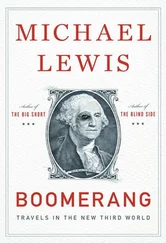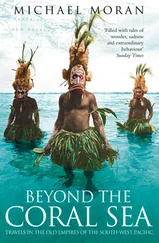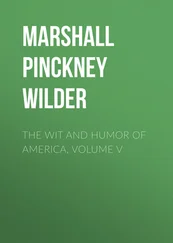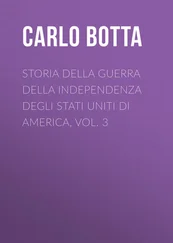1.I.7. VIEWS OF THE CORDILLERAS, AND MONUMENTS OF THE INDIGENOUS NATIONS OF THE NEW CONTINENT.* (*Atlas Pittoresque, ou Vues des Cordilleres, 1 volume folio, with 69 plates, part of which are coloured, accompanied by explanatory treatises. This work may be considered as the Atlas to the historical narrative of the travels.)
This work is intended to represent a few of the grand scenes which nature presents in the lofty chain of the Andes, and at the same time to throw some light on the ancient civilization of the Americans, through the study of their monuments of architecture, their hieroglyphics, their religious rites, and their astrological reveries. I have given in this work a description of the teocalli, or Mexican pyramids, and have compared their structure with that of the temple of Belus. I have described the arabesques which cover the ruins of Mitla, the idols in basalt ornamented with the calantica of the heads of Isis; and also a considerable number of symbolical paintings, representing the serpent-woman (the Mexican Eve), the deluge of Coxcox, and the first migrations of the natives of the Aztec race. I have endeavoured to prove the striking analogies existing between the calendar of the Toltecs and the catasterisms of their zodiac, and the division of time of the people of Tartary and Thibet, as well as the Mexican traditions on the four regenerations of the globe, the pralayas of the Hindoos, and the four ages of Hesiod. In this work I have also included (in addition to the hieroglyphical paintings I brought to Europe), fragments of all the Aztec manuscripts, collected in Rome, Veletri, Vienna, and Dresden, and one of which reminds us, by its lineary symbols, of the kouas of the Chinese. Together with the rude monuments of the aborigines of America, this volume contains picturesque views of the mountainous countries which those people inhabited; for example, the cataract of Tequendama, Chimborazo, the volcano of Jorullo and Cayambe, the pyramidal summit of which, covered with eternal ice, is situated directly under the equinoctial line. In every zone the configuration of the ground, the physiognomy of the plants, and the aspect of lovely or wild scenery, have great influence on the progress of the arts, and on the style which distinguishes their productions. This influence is so much the more perceptible in proportion as man is farther removed from civilization.
I could have added to this work researches on the character of languages, which are the most durable monuments of nations. I have collected a number of materials on the languages of America, of which MM. Frederic Schlegel and Vater have made use; the former in his Considerations on the Hindoos, the latter in his Continuation of the Mithridates of Adelung, in the Ethnographical Magazine, and in his Inquiries into the Population of the New Continent. These materials are now in the hands of my brother, William von Humboldt, who, during his travels in Spain, and a long abode at Rome, formed the richest collection of American vocabularies in existence. His extensive knowledge of the ancient and modern languages has enabled him to trace some curious analogies in relation to this subject, so important to the philosophical study of the history of man. A part of his labours will find a place in this narrative.
Of the different works which I have here enumerated, the second and third were composed by M. Bonpland, from the observations which he made in a botanical journal. This journal contains more than four thousand methodical descriptions of equinoctial plants, a ninth part only of which have been made by me. They appear in a separate publication, under the title of Nova Genera et Species Plantariem. In this work will be found, not only the new species we collected, which, after a careful examination by one of the first botanists of the age, Professor Willdenouw, are computed to amount to fourteen or fifteen hundred, but also the interesting observations made by M. Bonpland on plants hitherto imperfectly described. The plates of this work are all engraved according to the method followed by M. Labillardiere, in the Specimen Planterum Novae Hollandiae, a work remarkable for profound research and clearness of arrangement.
After having distributed into separate works all that belongs to astronomy, botany, zoology, the political description of New Spain, and the history of the ancient civilization of certain nations of the New Continent, there still remained many general results and local descriptions, which I might have collected into separate treatises. I had, during my journey, prepared papers on the races of men in South America; on the Missions of the Orinoco; on the obstacles to the progress of society in the torrid zone arising from the climate and the strength of vegetation; on the character of the landscape in the Cordilleras of the Andes compared with that of the Alps in Switzerland; on the analogies between the rocks of the two hemispheres; on the physical constitution of the air in the equinoctial regions, etc. I had left Europe with the firm intention of not writing what is usually called the historical narrative of a journey, but to publish the fruit of my inquiries in works merely descriptive; and I had arranged the facts, not in the order in which they successively presented themselves, but according to the relation they bore to each other. Amidst the overwhelming majesty of Nature, and the stupendous objects she presents at every step, the traveller is little disposed to record in his journal matters which relate only to himself, and the ordinary details of life.
I composed a very brief itinerary during the course of my excursions on the rivers of South America, and in my long journeys by land. I regularly described (and almost always on the spot) the visits I made to the summits of volcanoes, or mountains remarkable for their height; but the entries in my journal were interrupted whenever I resided in a town, or when other occupations prevented me from continuing a work which I considered as having only a secondary interest. Whenever I wrote in my journal, I had no other motive than the preservation of some of those fugitive ideas which present themselves to a naturalist, whose life is almost wholly passed in the open air. I wished to make a temporary collection of such facts as I had not then leisure to class, and note down the first impressions, whether agreeable or painful, which I received from nature or from man. Far from thinking at the time that those pages thus hurriedly written would form the basis of an extensive work to be offered to the public, it appeared to me, that my journal, though it might furnish certain data useful to science, would present very few of those incidents, the recital of which constitutes the principal charm of an itinerary.
The difficulties I have experienced since my return, in the composition of a considerable number of treatises, for the purpose of making known certain classes of phenomena, insensibly overcame my repugnance to write the narrative of my journey. In undertaking this task, I have been guided by the advice of many estimable persons, who honour me with their friendship. I also perceived that such a preference is given to this sort of composition, that scientific men, after having presented in an isolated form the account of their researches on the productions, the manners, and the political state of the countries through which they have passed, imagine that they have not fulfilled their engagements with the public, till they have written their itinerary.
An historical narrative embraces two very distinct objects; the greater or the less important events connected with the purpose of the traveller, and the observations he has made during his journey. The unity of composition also, which distinguishes good works from those on an ill-constructed plan, can be strictly observed only when the traveller describes what has passed under his own eye; and when his principal attention has been fixed less on scientific observations than on the manners of different people and the great phenomena of nature. Now, the most faithful picture of manners is that which best displays the relations of men towards each other. The character of savage or civilized life is portrayed either in the obstacles a traveller meets with, or in the sensations he feels. It is the traveller himself whom we continually desire to see in contact with the objects which surround him; and his narration interests us the more, when a local tint is diffused over the description of a country and its inhabitants. Such is the source of the interest excited by the history of those early navigators, who, impelled by intrepidity rather than by science, struggled against the elements in their search for the discovery of a new world. Such is the irresistible charm attached to the fate of that enterprising traveller (Mungo Park.), who, full of enthusiasm and energy, penetrated alone into the centre of Africa, to discover amidst barbarous nations the traces of ancient civilization.
Читать дальше












